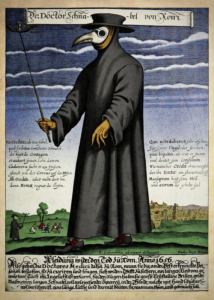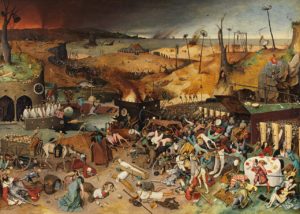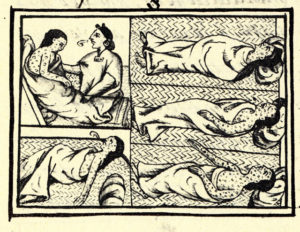The ten deadliest pandemics that changed the world forever

In the history of humanity, almost every century had an epidemic which took millions of people into graves. In many cases, the number of deaths is still unknown because of the sudden and incredibly quick spread of these epidemics.
Portfolio reported that many worry about the health consequences of the current coronavirus epidemic and started to compare the virus to other ones and major outbreaks that happened in the world. Luckily, due to modern medicine and medical methods, these epidemics do not take as many lives as the ones occurred in the previous centuries where disinfectants and information technology did not exist.
Plague of Antonine (165–180)
This was history’s first significant pandemic mentioned in remained written documents historians found. The disease was brought into the Roman Empire by soldiers returning from the Middle-East and was named after the family name of Emperor Marcus Aurelius. In the empire, approximately 5–10 million people died of the plague. According to storytellers, the disease disappeared for a short time but reappeared again taking even more lives.

Plague of Justinian (541–542)
It was a pandemic that afflicted the Byzantine (Eastern Roman) Empire and especially its capital, Constantinople, as well as the Sasanian Empire and port cities around the entire Mediterranean Sea. Until the Black Death, historians referred to this epidemic as the deadliest one; it took away the lives of 25–100 million people. Back in that day, it meant half of the European continent’s residents.

The Black Death (1331–1353)
With 75–200 million deaths the Black Death, also known as the Pestilence, the Great Bubonic Plague, the Great Plague or the Plague, or less commonly the Great Mortality or the Black Plague is still the deadliest pandemic that ever happened in history in Europe, the Middle-East, Central Asia and North Africa. Approximately 30–60% of Europe’s residents died because of the epidemic. The disease was caused by a certain oriental rat flea which carried the Yersinia pestis bacteria in from Central Asia. Europe needed 150 years to recover from losing 20 million people. The Black Death entered Hungary around 1349.


Cocoliztli epidemic (1545–1548)
The cocoliztli outbreak, or, the great pestilence is a term given to millions of deaths in the territory of New Spain in present-day Mexico in the 16th century attributed to one or more illnesses collectively called cocoliztli, a mysterious disease characterised by high fevers and bleeding. Mexico lost 5–15 million people; approximately 80% of its residents in the 16th century.

Persian plague (1772–1773)
The Persian bubonic plague epidemic took 2 million people away in less than one year. The outbreak of the disease was the first one since the major Black Death disappeared and was also the first case when quarantine measurements were introduced in the world. Quarantine eventually helped to stop the epidemic in 1773.
Third Plague Pandemic (1855–1860)
The third bubonic plague pandemic broke out in Yunnan, China, and spread across every country under Chinese territory. In five years, the disease killed 12 million people in China and India; 10 million only in India. According to the WHO, the pandemic was active until the 1960s when the daily number of infected people decreased to under 200.

Spanish Flu (1918–1920)
The pandemic, caused by the A-type influenza virus, was the first one in history that spread across every continent. In the first year of the outbreak, the number of deaths was more than in World War I, and nearly 500 million people were infected worldwide. In the two years, 17–50 million people died, but other estimations even mention 100 million. This makes the Spanish Flu the second deadliest pandemic after the Black Death. In the autumn of 1918, the fatal disease arrived at Budapest. The virus infected approximately 22,000 people, most of them aged 20-40, and thousands died.

Asian flu (1957–1958)
The disease was spread by wild ducks that carried the Chinese type-A influenza virus but not every scientist shares this thought. Nevertheless, the disease spread quickly and reached the United States of America and killed 70 thousand people, and in the world 1–4 million altogether. The vaccine was produced in 1957.

Smallpox (1877–1977)
The disease was caused by the Poxvirus variola, which is the most dangerous virus ever existed to humankind. The cruellest and scariest disease killed 500 million people in 100 years; most of them were only babies. Those who got infected but survived became blind. The only possible method for stopping the epidemic was infecting healthy people directly (artificial infection) while it was less risky and gave lifetime protection to healed individuals. WHO reported that the last natural infection had been diagnosed in 197,7 and three years later, the disease completely disappeared.

HIV/AIDS (1960– )
Until 2018, nearly 38 million people died because of AIDS; the most in 1997, approximately 3.3 million. Until 2005, 2.6 million people were registered each year with the infection. 61% of AIDS-infected people are from African countries.
Featured image: Wikimedia Commons by Armed Forces Institute of Pathology/National Museum of Health and Medicine
Source: www.portfolio.hu





